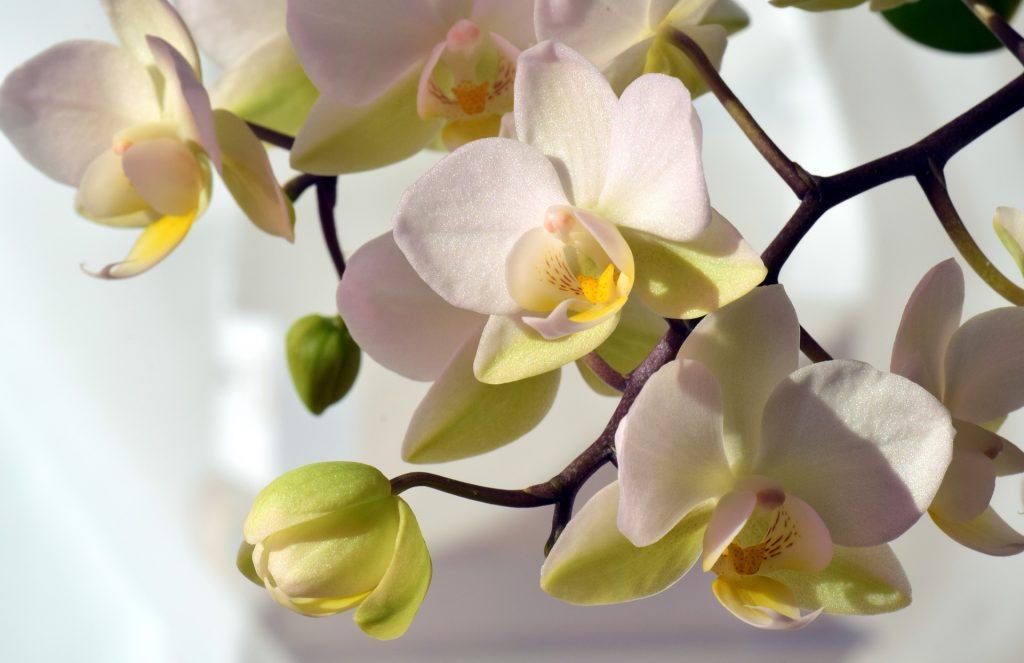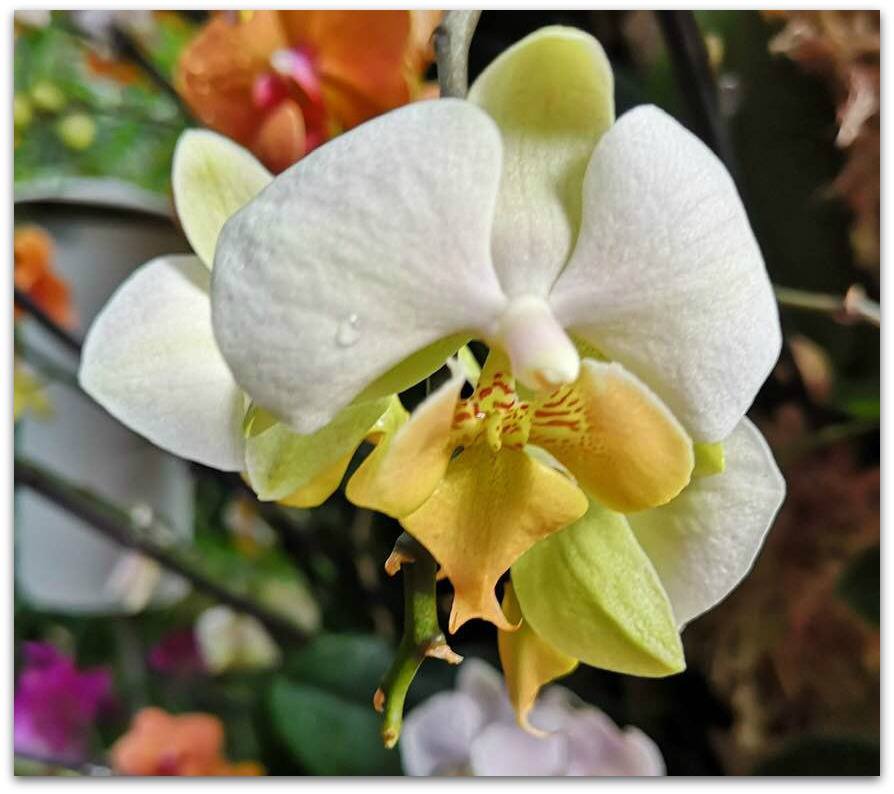I love orchids. I rescue them and grow them at home, and whilst I’m not green fingered, I can look after orchids. Orchids are gorgeous, but they can be a bit intimidating if you’ve never pruned or repotted one before. Don’t worry though – it’s not as tricky as it seems, and with a bit of care, you can keep your orchid healthy and thriving. Let’s break down how to prune and replant orchids in a way that’s simple and easy to follow.

Pruning Orchids
First off, let’s talk pruning. Orchids don’t need constant pruning like some plants, but giving them a bit of a tidy up now and then helps keep them in shape and encourages new growth. Here’s how to go about it:
1. Wait for the Right Time
The best time to prune an orchid is after it has finished blooming. You’ll know it’s ready when the flowers have all dropped off and the flower spike (that tall stem where the blooms were) starts to turn yellow or brown. If the spike is still green and healthy-looking, some people like to leave it, as it might produce more flowers. But once it starts to wither, it’s time for a trim.
2. Get the Right Tools
You don’t need anything fancy for pruning, just a pair of clean, sharp scissors or gardening shears. It’s really important to clean them first – orchids can be quite sensitive, and you don’t want to spread any bacteria or fungus. Just wipe the blades with a bit of rubbing alcohol or soak them in hot water for a few minutes.
3. Cut the Flower Spike
Once you’re sure the flower spike has had its day, you can cut it back. There are a couple of ways to do this depending on what you want:
• Option 1: If you want the plant to focus on new growth (which is usually a good idea), cut the spike right back to the base. Trim it about an inch above where the spike grows out of the main plant. This lets the orchid put its energy into producing new leaves or roots.
• Option 2: If the spike is still a bit green and you fancy trying your luck with getting more blooms, cut just above a node (those little bumps along the stem) – around halfway up the spike. This can sometimes encourage the orchid to produce a side shoot and grow new flowers, though it’s a bit hit or miss.
4. Trim Any Dead or Dying Leaves
While you’re at it, give the whole plant a once-over. If you spot any yellowing or damaged leaves, you can trim these too. Always cut them off at the base, where they meet the stem. This keeps your orchid looking tidy and prevents any nasties from taking hold.
Repotting Orchids
Orchids don’t need repotting too often – maybe once every year or two – but they do benefit from a fresh pot and new bark now and again. Repotting helps keep the roots healthy and gives the plant more space to grow. Here’s how to replant your orchid:
1. Choose the Right Time to Repot
The best time to repot an orchid is just after it’s finished flowering, and before it starts growing new roots or leaves. You’ll know it’s time to repot when the potting mix starts breaking down, the roots are looking cramped, or if you notice a lot of roots growing out of the pot.
2. Gather Your Supplies
You’ll need:
• A slightly larger pot (but not too big – orchids like being a bit snug)
• Fresh orchid potting mix (this is usually made of bark, and you can grab it from garden centres or online)
• Sterilized scissors or pruning shears
• A clean workspace
Orchids don’t grow in soil like most plants, so make sure to get the proper orchid mix. The bark helps the roots get enough air and prevents them from sitting in water.
3. Carefully Remove the Orchid from Its Pot
Hold the base of the plant and gently wiggle it out of its old pot. If the orchid is really stuck, squeeze the sides of the pot to loosen it. Be careful not to yank it out, as the roots are delicate and can snap easily.
Once it’s out, have a look at the roots. Healthy roots should be firm and white or green. Any that are brown, mushy, or shriveled need to be cut away, as they’re dead or dying. Use your sterilized scissors to carefully trim them back to where the healthy root tissue starts.
4. Trim and Tidy the Roots
After removing the dead roots, you might have a fair bit of trimming to do. Don’t be afraid to tidy them up – getting rid of the unhealthy roots helps the plant focus its energy on new growth.
If your orchid has a lot of long, healthy roots growing outside the pot, don’t cut these off! These are aerial roots, and they’re a sign of a healthy plant. They’re also helping the orchid get moisture from the air.
5. Repot the Orchid
Now that your orchid is all cleaned up, it’s time to put it into its new home. Place a little bit of fresh orchid bark in the bottom of the new pot, then gently position the plant in the centre.
Start filling in around the roots with more fresh bark, making sure to pack it loosely but securely around the plant. Orchids don’t like being too cramped, so make sure the roots have some breathing room.
When the plant is securely in the pot, give it a little shake to settle the bark. You don’t need to press the mix down too hard – orchids prefer a bit of air around their roots.
6. Water Lightly
Once your orchid is in its new pot, give it a light watering. Be careful not to drench it – orchids don’t like sitting in water, and too much can cause root rot. Just a light sprinkle is enough to help the bark settle.
After repotting, hold off on heavy watering for a week or so to let the orchid adjust to its new home.

Aftercare
Once your orchid is pruned and repotted, it should start bouncing back in no time. Place it somewhere with bright, indirect light and avoid direct sunlight, which can scorch the leaves. Orchids like a humid environment, so misting the plant every few days can help it thrive, especially if your home tends to be dry.
Keep an eye on the watering – orchids don’t need too much water. Let the bark dry out a bit between waterings, and always make sure there’s no water sitting at the bottom of the pot.
With a bit of regular care, your orchid will be back to its blooming best! Pruning and repotting might seem a bit daunting at first, but once you get the hang of it, your orchid will thank you for the attention.